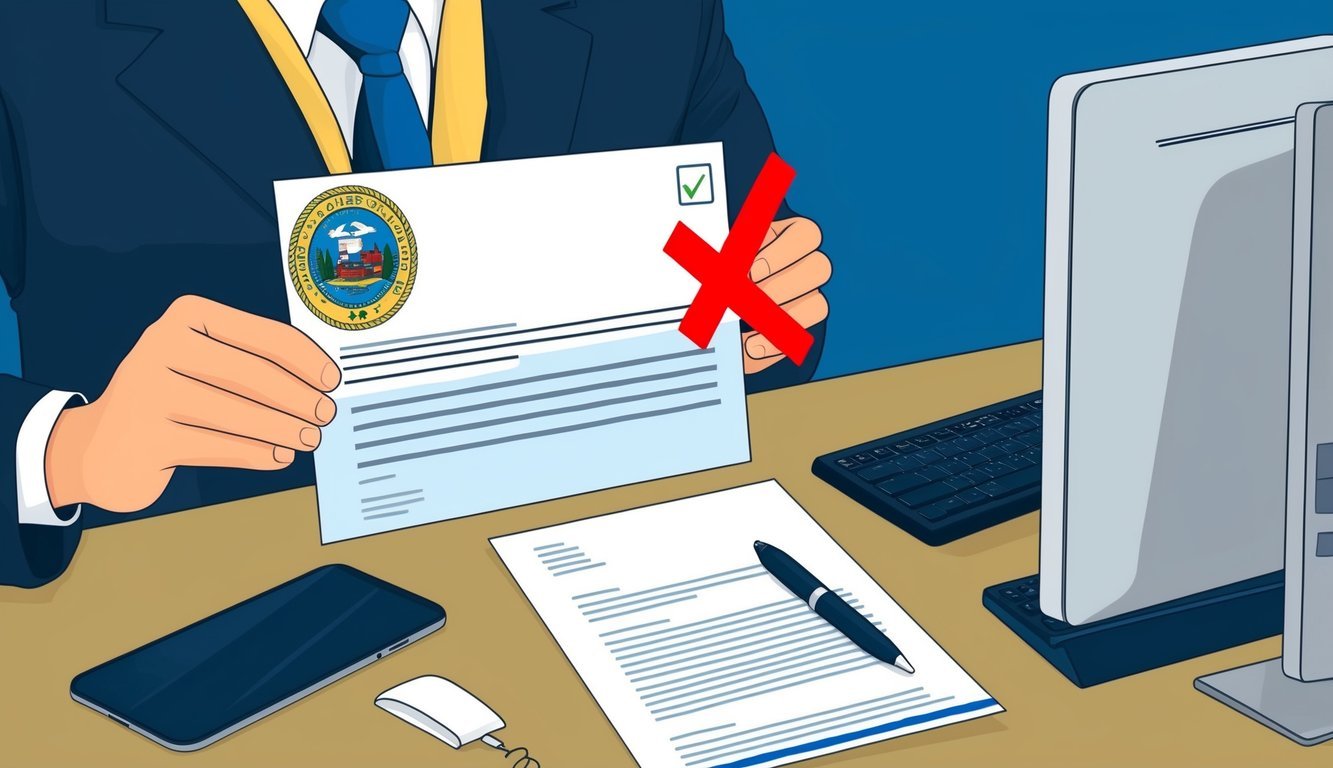Are you thinking about applying for disability benefits in Indiana? You’re certainly not alone.
Many Hoosiers deal with health issues that can make it tough, or even impossible, to work.
The silver lining? Help is out there! You can fill out an application for disability benefits online or give the Social Security Administration (SSA) a call.

Getting started might seem daunting, but it’s easier than you think! The first step is completing an application, sharing some medical details, and answering a few questions about your work history.
Feeling overwhelmed? Don’t sweat it.
There are a ton of resources out there to help guide you along the way.
Remember, applying for disability isn’t just about financial assistance; it’s about taking a big step toward looking after yourself and your loved ones.
By applying for the benefits you deserve, you’re making a smart play for your future!
Key Takeaways
- You can apply for disability benefits online or by calling the Social Security Administration
- The process entails submitting your medical records and work history
- Denied? Don’t fret! You can appeal the decision through Indiana’s Disability Determination Bureau
Eligibility and Applying for Disability Benefits

When it comes to getting disability benefits in Indiana, there are certain requirements you need to meet and steps to follow.
I know it can seem a bit complicated, but understanding the basics makes the process much smoother.
Understanding Disability in Indiana
In our lovely state, disability benefits come mainly from two programs: Social Security Disability Insurance (SSDI) and Supplemental Security Income (SSI).
SSDI is for those who’ve worked and contributed to Social Security, while SSI lends a hand to those with limited income and resources.
To qualify, you’ll need a medical condition that stops you from working for at least 12 months or one that’s likely to lead to death.
The SSA has a list of impairments that help them determine whether you’re considered disabled.
You’ll have to prove that your condition is severe enough to keep you from doing any meaningful work.
They’ll take a look at your age, education, and work experience when making their decision.
Steps to Apply for Disability Benefits
Your journey starts with the application process, which you can do online, by phone, or in person at your local SSA office.
Here’s a simple rundown of what you need to do: Have all your important documents ready, including medical records and background on your work history.
If you’re unsure how to sign up for disability, the SSA website is filled with step-by-step info to help you out.
You can also call their office for assistance or set up an appointment for in-person help.
- Gather all your necessary documents and information
- Fill out the disability application
- Complete the medical release form
- Submit your claim
Once you apply, hang tight! The SSA will review your application, and they might ask for additional information or schedule a medical exam.
The whole process can take a few months, so it’s wise to apply as soon as you realize you can’t work.
Required Documentation and Information
When the time comes to apply for disability, having the right info premade is key.
Here’s what you should have handy:
- Your Social Security number and birth certificate
- Contact details of your doctors, hospitals, and clinics that have treated you
- Dates of your medical visits
- Names and dosages of your current medications
- Existing medical records
- Laboratory and test results
- A summary of your work history
- Your latest W-2 form or federal tax return
Having all this info prepped can really help speed things up.
Just remember: honesty is the best policy.
The more thorough your application, the easier it’ll be for the SSA to make their decision.
After Application: Approval, Denial, and Next Steps

After you hit “submit” on your disability application in Indiana, it’s time to buckle up for a wait.
The process can drag on, but understanding what comes next can make it less stressful.
Here’s what you should expect and what you can do.
Processing and Receiving SSDI or SSI
Your case will be reviewed by the Indiana Disability Determination Bureau, which usually takes about 3 to 5 months.
They’ll examine your medical records and work history.
If you’re approved, you’ll get a letter detailing your benefit amount.
For SSDI, payments kick in after a 5-month waiting period from when your disability began.
If you’re applying for SSI, payments can start as early as the month after you apply.
Typically, the average monthly SSI payment in Indiana is around $600.
You might receive back pay for the months you waited, with SSDI providing up to 12 months of back pay.
SSI back pay goes back to your application date.
And don’t forget to report any changes to your condition or job status, as it keeps your benefits accurate.
The Appeals Process
What if your application is denied? Don’t throw in the towel just yet! You have 60 days to appeal.
The first step is requesting a reconsideration, and a fresh team at the Indiana DDB will give your case another look.
If you’re denied again, you can ask for an appeal hearing where you’ll get to talk to a judge about your situation.
This is your moment to explain face-to-face what you’re going through.
If you have new evidence or documentation, bring it along.
It might also be worth considering a lawyer who knows the ropes—they can help argue your case effectively.
Sure, the hearing might sound intimidating, but remember: it’s less formal than a courtroom.
The judge’s goal is to understand your circumstances.
Additional Support and Resources
Beyond federal benefits, Indiana offers extra help.
Vocational Rehabilitation Services can assist you in finding work if you’re able.
They provide job training and placement services.
If you’re deaf or hard of hearing, there are specialized programs available, including interpreter services and equipment like TTY phones.
Local disability groups can offer support and advice, helping you understand your rights and navigate the system.
And while you wait for benefits, food banks and housing assistance programs can provide crucial support.
Don’t hesitate to use these services; they exist to help you through tough times.
Frequently Asked Questions

Applying for disability benefits can be tricky, and you probably have a ton of questions.
Let’s tackle some of the common ones.
How do I apply for emergency disability benefits?
Indiana doesn’t have a specific emergency disability program, but you can speed up your application if you have all your documents in order.
Give the Indiana Disability Determination Bureau a call at 800-622-4968 to ask about moving your claim along.
What sort of documentation is required when applying for Social Security Disability?
You’ll need to present medical records, work history, and your personal details.
Be ready with doctor’s reports, test results, and medication lists.
Don’t forget to include your pay stubs, tax returns, and Social Security number.
Being prepared can make your application smoother.
Can you explain the Social Security disability benefits pay chart?
Your benefit amount will depend on your work history and earnings.
As of 2024, the maximum SSDI payment is $3,822 per month, while the average payment in Indiana is around $1,728.61 monthly.
SSI payments are a bit lower, with a maximum of $943 monthly.
What disabilities automatically qualify you for disability benefits?
While no specific disability guarantees approval, some conditions are more likely to qualify, like severe mental disorders, certain cancers, and organ failures.
The SSA provides a list of conditions that may expedite your application, but remember: you’ll still need to prove your condition keeps you from working.
What should I avoid saying during a disability medical examination?
Stick to the facts about your symptoms without exaggerating or downplaying.
It’s best to avoid talking about financial struggles or unrelated topics.
Focus on discussing how your condition impacts your day-to-day life and job capabilities, and be honest in your answers.
How do I apply for disability benefits for a child in Indiana?
You can apply for Supplemental Security Income (SSI) for children under the age of 18.
Gather their medical records and school reports to illustrate how the disability affects their life.
You can apply online, over the phone, or in person at your local Social Security office.

